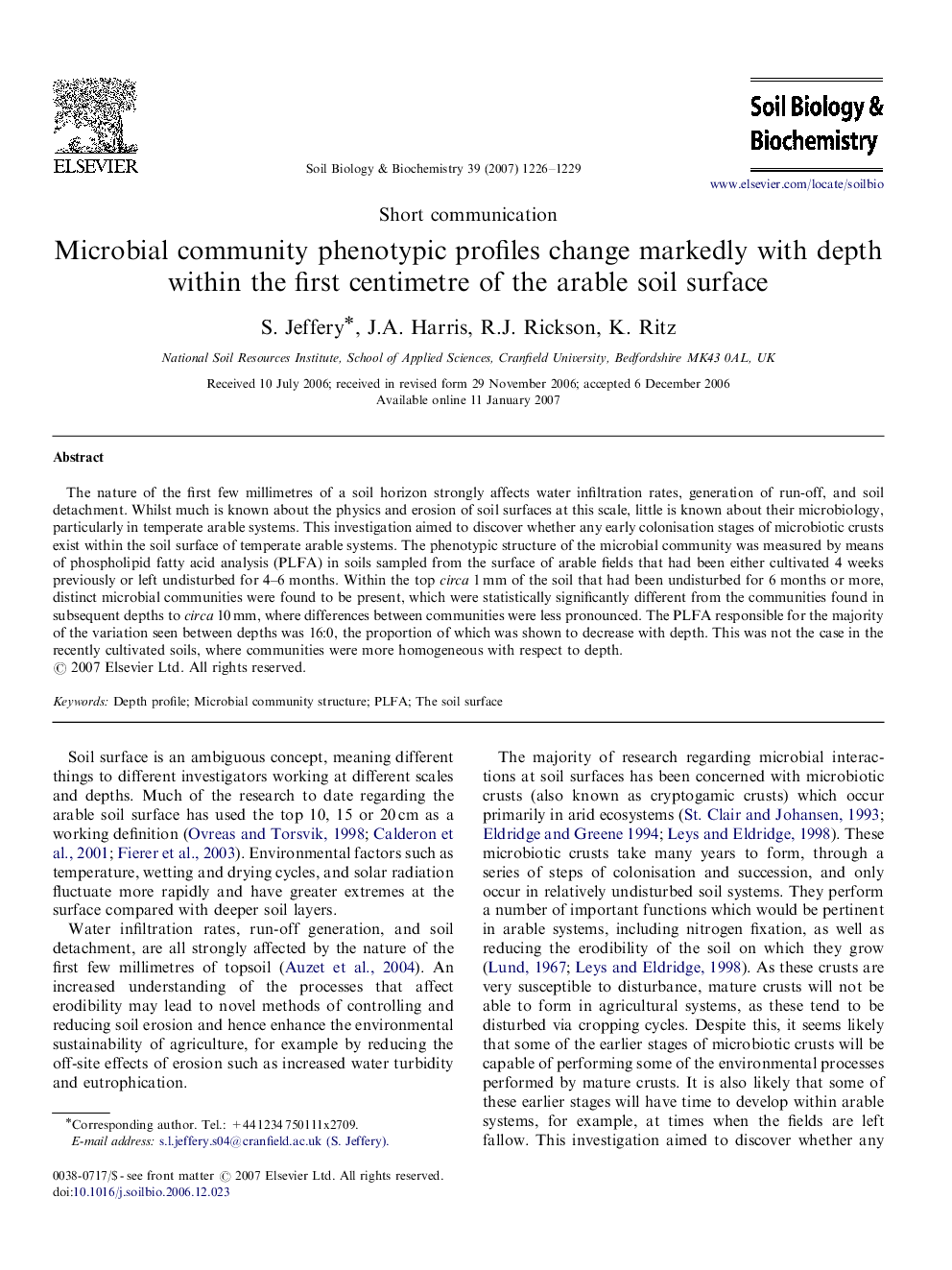| Article ID | Journal | Published Year | Pages | File Type |
|---|---|---|---|---|
| 2026432 | Soil Biology and Biochemistry | 2007 | 4 Pages |
The nature of the first few millimetres of a soil horizon strongly affects water infiltration rates, generation of run-off, and soil detachment. Whilst much is known about the physics and erosion of soil surfaces at this scale, little is known about their microbiology, particularly in temperate arable systems. This investigation aimed to discover whether any early colonisation stages of microbiotic crusts exist within the soil surface of temperate arable systems. The phenotypic structure of the microbial community was measured by means of phospholipid fatty acid analysis (PLFA) in soils sampled from the surface of arable fields that had been either cultivated 4 weeks previously or left undisturbed for 4–6 months. Within the top circa 1 mm of the soil that had been undisturbed for 6 months or more, distinct microbial communities were found to be present, which were statistically significantly different from the communities found in subsequent depths to circa 10 mm, where differences between communities were less pronounced. The PLFA responsible for the majority of the variation seen between depths was 16:0, the proportion of which was shown to decrease with depth. This was not the case in the recently cultivated soils, where communities were more homogeneous with respect to depth.
